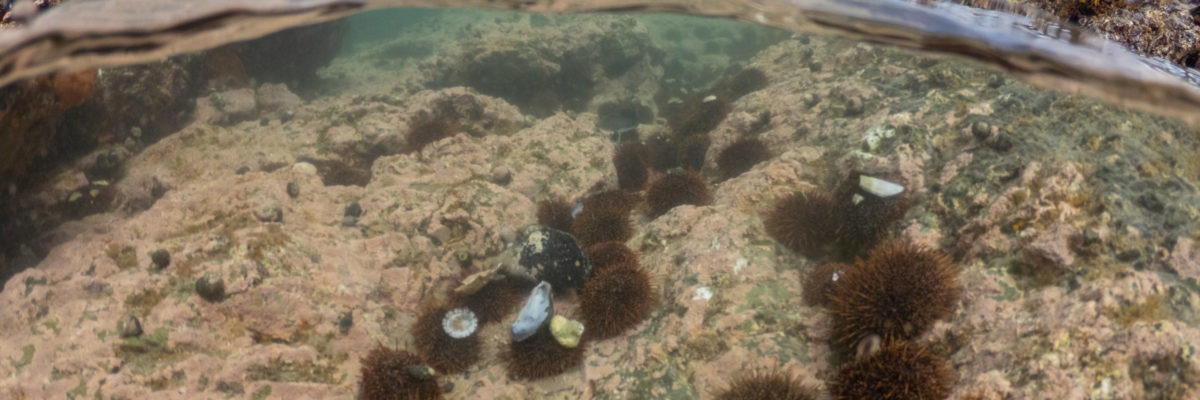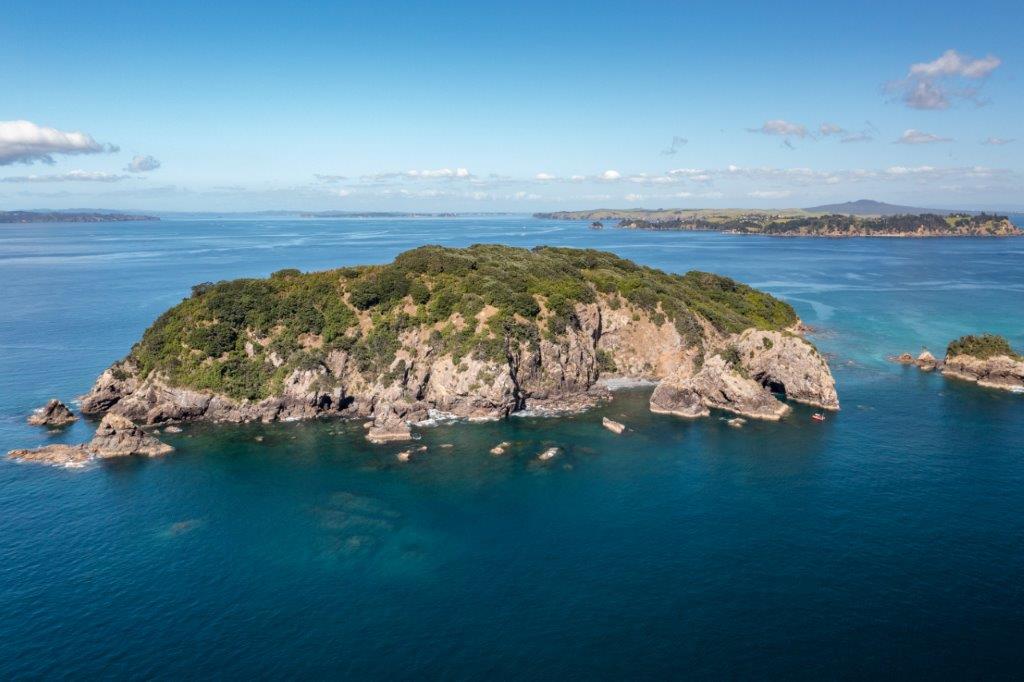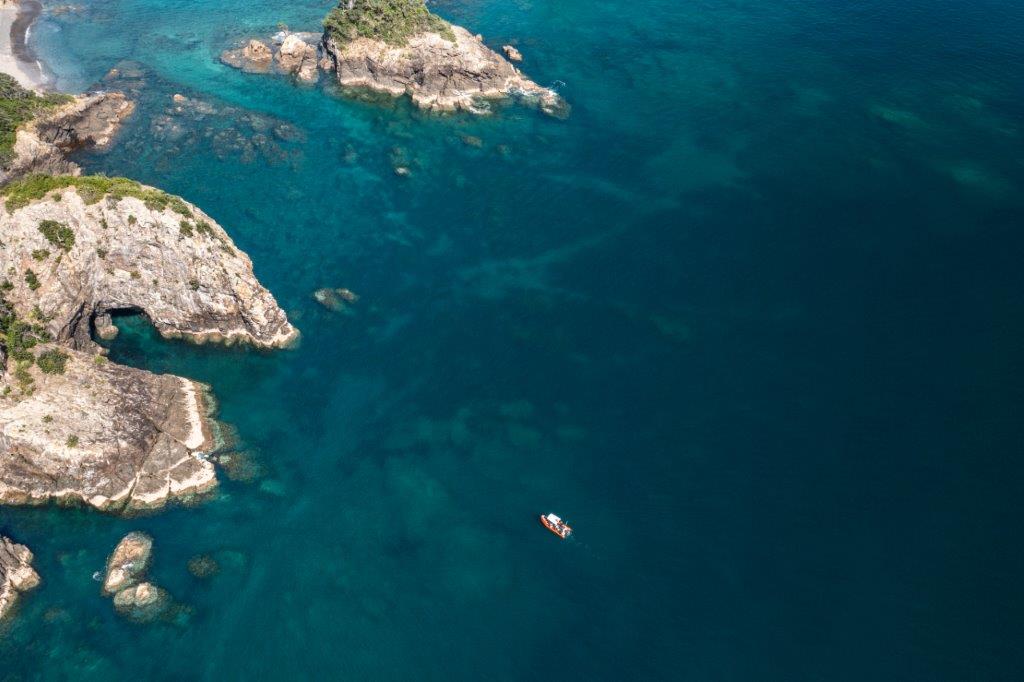The Noises hold a very special interest for seabird lovers. Being home to at least…

Marine Musings
I spend hours in the water snorkelling, looking at stuff and wondering. Since 11 January the strong southwesterly winds have mostly decreased. The temperatures have been getting steadily warmer and we’ve been treated to beautiful clear water.
I don’t think there are any mysteries as to why the water quality is beautiful this year. We haven’t had rain for months! This appears to confirm that even the waters around the Noises, which are quite a long way from the mainland, are being increasingly impacted by sediment. Sediment from inadequately managed coastal development, urban pollution, and dirty rivers which carry the effects of farming and forestry practices into the Hauraki Gulf. Perhaps also it’s the lack of storms and ocean swells this summer which have suppressed the existing sediment from being re-suspended as much. I do not doubt that water quality around the Noises will change once we get some rain but for now (being the beginning of March) we will make the most of it.
This visibility around the Noises has helped to allay one suspicion I had as to why we’re not seeing what we once did. It’s nothing to do with not having good enough water quality to see clearly. But rather, that things we used to see just aren’t there.
Where have they gone?
The Blue Maomao, Blue Cod, Butterfish, wrasse, leather jackets, scallops, paua, many types of lesser recognised shellfish and crayfish are gone. Where are the yellow-eyed mullet? How can they be gone? Where have they gone?
I’m not saying you can never find any of these things (with the exception being the crayfish), it’s just that now it’s a relief to see them rather than an expectation that you will.
A vast percentage of the mussels, both intertidal and sub-tidal have gone. Some of these losses look to be a result of a natural event which hopefully we might learn more about. Others, without a doubt the result of harvesting.
What happens when big areas which used to be covered in mussels are now smooth rock, grazed by kina and picked at by parore? Is it possible for new mussels to re-establish themselves on this smooth rock? How the hell do they hang on? Some of the intertidal rocks which used to support so much life and regular crops of baby mussels are also changing. They are being grazed by ever-increasing numbers of kina. What impact might this be having? I wonder if there’s a connection between the growing kina barrens and the loss of some of this diversity? I wonder if some of the fish and shellfish species don’t like the increasing sediment?
The pipefish family
My pipefish family have gone from the kelp on the rock just off the Main Beach. They were very cool and I looked forward to watching them each summer. I miss them, but sadly, I don’t have to ask why they’ve gone. The kelp has gone and has been replaced by hundreds (or perhaps more accurately thousands) of kina.
The snapper
Finally, the snapper are very obvious this year but what’s missing from the past couple of summers is the abundance of baby ones. These little iridescent, glowing blue spots used to hang around the mussel reefs in high numbers. Given the fishing pressure we’re seeing around the islands I wonder whether there will be a decline of snapper in the next couple of years.



